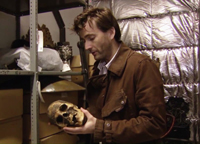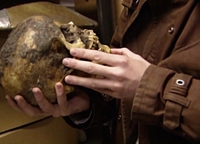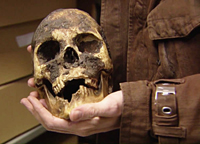|
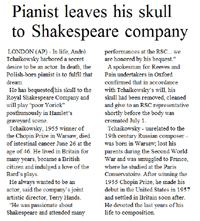
From the
Rochester New York Democrat and Chronicle newspaper on August 15, 1982.
While there are errors (both parents did not die in World War Two; he
was never smuggled to Paris), this Associated Press (AP) posting appeared
in newspapers worldwide. It was this very article that started David
A. Ferré on his 30-year search into the life and times of André
Tchaikowsky.

BBC TV series
"QI" features André's skull - Click
Here

The "Skull" portion of a BBC Radio 3 Broadcast, "A
Study in Contrast" from July 10, 1992, narrated by pianist
David Owen Norris, with Terry Harrison and Peter Frankl (courtesy of
the BBC): contrast_skull.mp3

(UK) TV
broadcast Dec. 2, 2008
channel4_skull_story.mp3
Click
Here for a video Link
Voices: Jon Snow, Stephanie West, Terry Harrison, and
Judy Arnold
(Also on YouTube - Click
Here)

(USA) National
Public Radio
broadcast about the skull
Dec. 3, 2008 npr_skull.mp3
Voice:
Renee Montagne
Click
Here for NPR Webpage

(USA) Public
Broadcasting System (PBS) website for "Great Performances"
has David Tennant's "Hamlet" online. Chapter 18 features André's
skull. Click
Here.
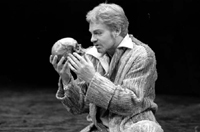
Derek Jacobi
"Hamlet" (1979)
with a plastic skull
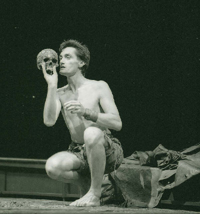
Roger Rees
"Hamlet" (1984)
with a plastic skull
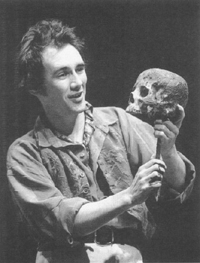
Mark Rylance
"Hamlet" (1989)
with a replica of André's skull
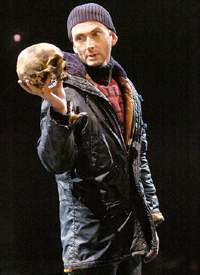
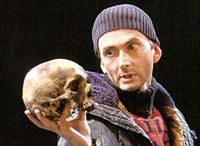
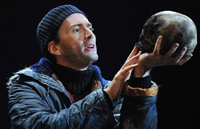
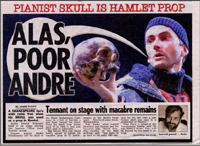
David Tennant
"Hamlet" (2008)
with André's skull
The Telegraph
(Click
Here)
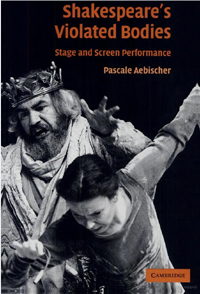
Shakespeare's violated bodies:
Stage and Screen Performance
by Pascale Aebischer
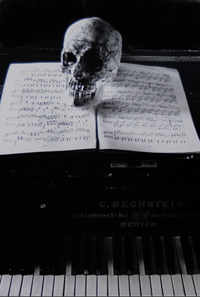
Skull of
André Tchaikowsky
(photo: John
Batten Photography)
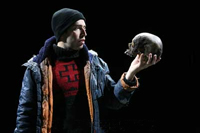
Edward Bennett
"Hamlet" (2008)
With André's skull
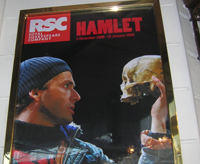
Poster outside
of Novello
Theatre, London (2008-2009)
[Photo: Cecilia Leung]
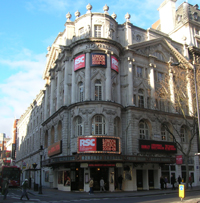
Novello
Theatre showing RSC's Hamlet (2008-2009)
[Photo: Cecilia Leung]
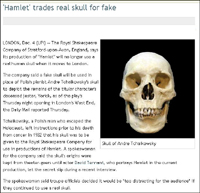
UPI
News Article (2008)
(Reported to be André's skull)
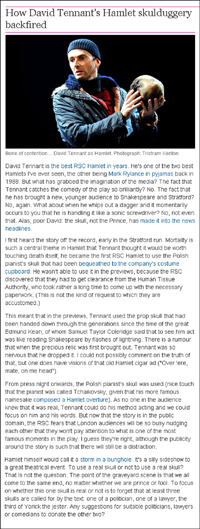
Skull News in English (2008)
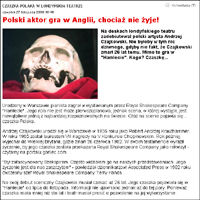
Skull News in Polish (2008)

Skull News in German (2008)
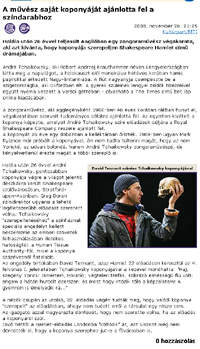
Skull News in Hungarian (2008)
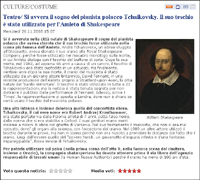
Skull News in Italian (2008)
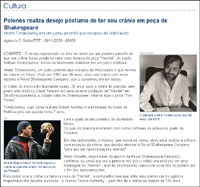
Skull News in Portuguese (2008)
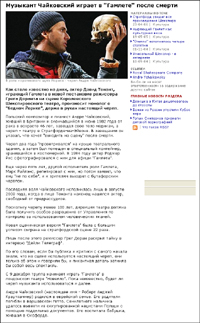
Skull News in Russian (2008)
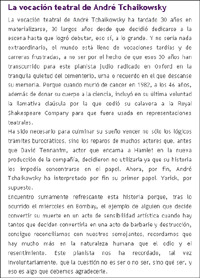
Skull News in Spanish (2008)
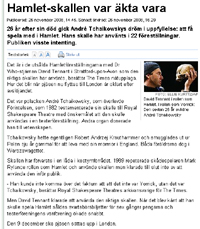
Skull News in Swedish (2008)
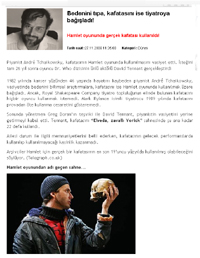
Skull News in Turkish (2008)
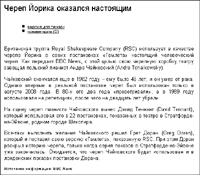
Skull News in Ukrainian (2008)
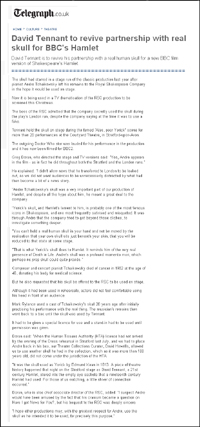
From the Telegraph, Nov. 2009
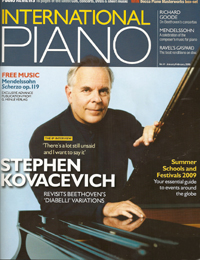
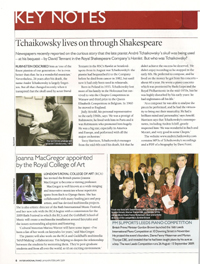
International
Piano Magazine
Jan/Feb 2009 Issue
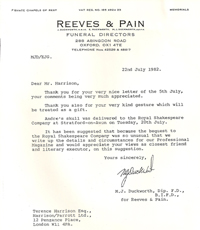
Skull letter
from Funeral Directors (1982)
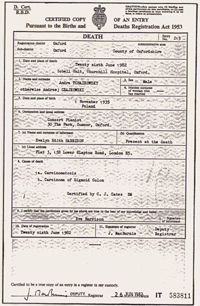
Death Certificate
(1982)
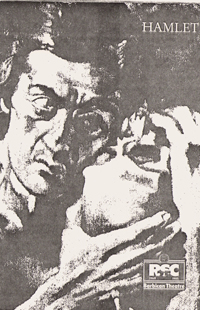
Roger Rees
Hamlet Poster with André's skull (1984-1985)
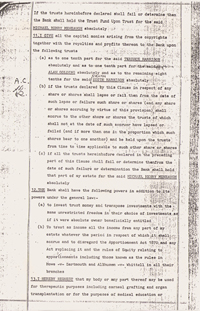
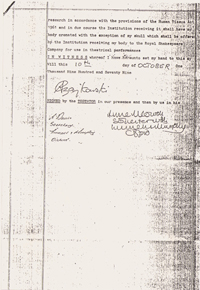
Portion
of the Will (1979)

Article
in Telegraph Daily
See November 2009 Update

Article in
Jewish Daily Forward
See December 2009 Update

Production
company for Hamlet
DVD
featuring André's skull
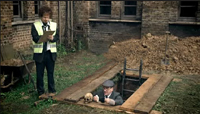
Hamlet Graveyard
Scene
with André's skull (2009)
(BBC television broadcast)
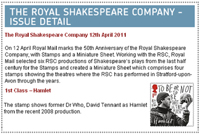
Royal Mail
Issue Detail - Hamlet Stamp with André's Skull
(Click
Here or Image)
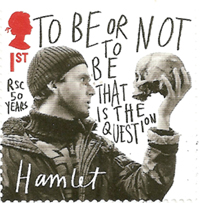
The Hamlet
Stamp
(Click Here or Image)
|
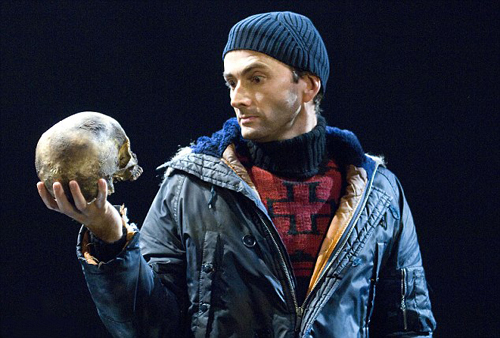
David Tennant
as Hamlet with André Tchaikowsky skull
Recent
Posts (2017)
The following are recent "skull" posts:
The Guardian
(Click
Here)
Secret Jewish History (Click
Here)
André
Tchaikowsky on UK Royal Mail Postage Stamp - April 2011
From the Royal Mail website: "On 12 April [2011] Royal Mail marks
the 50th Anniversary of the Royal Shakespeare Company, with Stamps and
a Miniature Sheet. Working with the RSC, Royal Mail selected six RSC
productions of Shakespeare’s plays from the last half century for
the Stamps and created a Miniature Sheet which comprises four stamps
showing the theatres where the RSC has performed in Stratford-upon-Avon
through the years." As suggested above, one of these six stamps
includes David Tennant (Hamlet) holding the skull of André Tchaikowsky
and, thus, André now appears on a UK Royal Mail First Class Postage
stamp!
Click
Here
for the Royal Mail Website about the Hamlet stamp.
Click
Here or the image for a larger view of the Hamlet stamp.

Skull
"Hamlet" Update - January 2010
From July to November, 2008, the skull used in the graveyard scene in
the Stratford Royal Shakespeare Company (RSC) production of Hamlet was
that of André Tchaikowsky, but the use of the skull was a secret.
When the production moved to London in December, 2008, the secret got
out and the RSC announced they would not use the skull for the London
run. However, this was not the case and the RSC continued to use André's
skull right through to the last performance on January 10, 2009. Thus,
André had his time on stage and was returned to a box in the
RSC prop room, but for only for a short while because the BBC decided
to make a TV dramatisation of the RSC production with David Tennant,
and to once again use André's skull.
January,
2010 - The DVD was released of Hamlet featuring the skull of André
Tchaikowsky, used in Act 5, Scene 1 (graveyard scene). You can view
this scene and scene text using the links below. Be prepared - the opening
of Act 5, Scene 1 shows André's skull in close up.
|
"Skull" Videos on YouTube
|
| Hamlet
Act 5, Scene 1 (part 1) |
Click
Here |
| Hamlet
Act 5, Scene 1 (part 2) |
Click
Here |
| Entire
Hamlet Production |
Click
Here |
| David
Tennant on Hamlet (13:40 to 14:43) |
Click
Here |
| David
Tennant on Hamlet (continued) (0:00 to 2:02) |
Click
Here |
The entire
Hamlet production is also available online on the Public Broadcasting
System (PBS) "Great Performances" website (Click
Here), where the graveyard scene is recorded as Chapter 18 on the
website. This was broadcast by PBS on April 28, 2010.
David
Tennant and the "skull"
'This is our Yorick. He was a Polish composer and pianist called André
Tchaikowsky. And when he died, in the early eighties, he bequeathed
his head to be used in a production of Hamlet with the Royal Shakepeare
Company. He wanted to play Yorick. So here he is. This is André.
He was introduced to us by our director Greg on the first day of rehearsals,
as the final member of the company. There was a variety of reactions
to having a real human head in the production. Some people find it quite
difficult. I must say, personally, I was rather excited by it. It's
one of the clichés of the play now, an actor holding a skull.
And I suppose the trouble with the cliché is that it loses meaning.
But if you are presented with an actual person's skull, a real bit of
human, then Hamlet's speech about Yorick and about staring at the skull
of a man he knew well… it becomes all the more potent when you
are aware that you are holding somebody's head quite literally in your
hands. There he is. André was there. I feel very pleased to have
helped him fulfil his ambition.' (Courtesy: Shakespeare Uncovered -
Original Website Here)
Illuminations
"Hamlet" on DVD - December 2009
Illuminations
is an independent production company and media publisher that specializes
in making and distributing films about the arts. It was Illuminations
that filmed David Tennant as Hamlet for BBC2 television for broadcast
on December 26, 2009. As in the stage production in both Stratford (2008)
and London (2008-2009), the skull of André Tchaikowsky was used
in the graveyard scene for the BBC2 broadcast. This Hamlet production
is available for purchase as a Digital Video Disc (DVD) and is in the
European PAL television format. Click
Here for purchasing information from Illuminations.
BBC
News about the skull
A good summary of the skull, it's history and how it came about (Click
Here).
Story
of the Skull - From the Biography
The following text is from the book,
The Other Tchaikowsky - A Biographical Sketch of André Tchaikowsky,
and describes what is known about the André's donation of his
skull to be used in Shakespeare theatrical productions of Hamlet.
The
Skull Bequest
After André's death, Terry and Eve Harrison went to André's
home to advise his neighbors of the unhappy news. They found a will,
written on October 10, 1979. It seemed a standard document, except for
the end of Clause 13:
13. I
HEREBY REQUEST that my body or any part thereof may be used for therapeutic
purposes including corneal grafting and organ transplantation or for
the purposes of medical education or research in accordance with the
provisions of the Human Tissue Act 1961 and in due course the institution
receiving it shall have my body cremated with the exception of my
skull, which shall be offered by the institution receiving my body
to the Royal Shakespeare Company for use in theatrical performance.
The bequest
of André's skull to the Royal Shakespeare Company was a surprise,
but Terry and Eve were determined that André's last wishes be
honored. Terry telephoned playwright Christopher Hampton ("Les
Liaisons Dangereuses"). Hampton lived in Oxford and they had become
friendly when André decided to undertake an opera based on Hampton's
play, "Total Eclipse." Hampton called a friend at the RSC,
joint artistic director Terry Hands. Terry Hands:
"I
was informed of the bequest immediately after André's death
and asked Christopher Hampton how seriously felt was the request.
It did seem serious. André was passionate about Shakespeare
and had attended many performances at the RSC. We were honoured and
we accepted. It was agreed that when next we played Hamlet, it would
be used."
The funeral
directors at Reeves and Pain who were handling the cremation refused
to remove André's head, and further, they believed such a bequest
was illegal. Terry contacted his legal advisors who in turn contacted
the British Home Office. The Home Office decided the bequest was not
illegal and the RSC could accept the gift. Reeves and Pain asked that
the head be removed by a medical staff member at the hospital before
they picked up the body. This was done. At virtually the last minute,
Reeves and Pain was able to obtain André's remains from the hospital,
sans cranium, in time to prepare his ashes for the memorial service
on July 2. The head was turned over to a museum for processing.
The memorial
service for André Tchaikowsky was announced in a letter from
Terry Harrison:
André
Tchaikowsky will be cremated at the Oxford Crematorium, Bayswater
Road, Oxford, at 11 a.m. on Friday, July 2. We are following André's
wish that the service not be religious. The cremation will be conducted
by Chad Varah, the founder of The Samaritans and a very close friend
of André's. At the beginning of the ceremony we shall have
a performance of André's Trio Notturno which will receive its
world premiere at the Cheltenham Festival on the evening of July 4.
It was recorded for André by the trio he wrote it for Peter
Frankl, Gyorgy Pauk, and Ralph Kirshbaum -- three days before he died,
and it was the last piece of music he heard. At the end of the ceremony
we shall playa recording of the adagio from Schubert's Quintet in
C major for Strings, Opus 163, which André particularly loved.
The genesis
of the skull bequest comes from a conversation between André
and his manager, Terry Harrison. André suggested to Terry that
he would leave his skull to the Royal Shakespeare Company so that they
might have a real skull for Hamlet productions. As Pascale Aebischer
relates in her book, Shakespeare's
Violated Bodies, André's skull might not be used in Hamlet
because the actors always saw André instead of Yorick:
The extend
of the skull’s capacity for extrafictional reference and its
concomitant potential to substantially influence the interpretation
of the scene first became apparent to me when I began my research
on Ron Daniels’s second RSC production [in 1989]. In the middle
of a stack of archival material about the production, I found a memorandum,
dated 9 May 1989, that read: “If André Tchaikovsky isn’t
actually playing Yorick this year, please can we have his skull back
in the Collection for future reference, or whatever you do with skulls
of dead pianists.” The story I managed to piece together from
this point of departure is the following.
In 1980,
André Tchaikovsky, an Oxford-based classical musician, saw
Michael Pennington’s performance of the role of Hamlet in Stratford-upon-Avon.
He was so taken by the macabre dialogue in the graveyard scene that
on his way home to told his companion [Terry Harrison] of his intention
to bequeath his skull to the RSC so that he - or at least a part of
him - might appear as Yorick in a future production of Hamlet. A few
years later, the property department manager for the RSC, William
Lockwood, received a call from an undertaker [M. J. Duckworth for
Reeves & Pain, Funeral Directors, Oxford] who asked whether the
RSC might be interested in the cranium of a deceased client. Horrified,
Mr. Lockwood passed the question on to Terry Hands (at the time the
RSCs artistic director), who promptly accepted the bequest. A mere
ten days later, to Lockwood’s discomfiture and evident delight
of the department’s dog, Mr. Lockwood received a cardboard parcel
containing the freshly processed golden-toothed skull of André
Tchaikovsky. After extensive airing [two years on the roof of an RSC
building], if found a provisional resting place on a shelf in the
property department.
He briefly
left the shelf for a photo-session with Roger Rees for the poster
of Daniels’s 1984 production, but was immediately sent back to
rest, a Fiberglas cast of his cranium taking his place in the theatre.
André Tchaikovsky’s first genuine chance to star as Yorick
came only in 1989, when Mark Rylance started to rehearse the title
role of Hamlet in Daniels’s production. A rehearsal note dated
13 February 1989 records: “Mark Rylance has asked whether it
would be possible to use the real skull that was donated to the RSC
as Yorick’s skull?” The property department complied, and
Tchaikovsky appears to have spent one month in the rehearsal room
preparing the role of Yorick.
On 23
March 1989, however, the first indication of trouble is casually mentioned
in a rehearsal note: “we will be using the real skull for Yorick
but will need a standby in case of accident.” What accident?
Although Tchaikovsky must have been aware that playing Yorick would
entail being “knocked about the mazard with a sexton’s spade”
(5.1.85-6), Rylance’s desire to grant Tchaikovsky’s wish
seems thus to have been paradoxically checked by a simultaneous desire
to honour the dead. Eventually, squeamishness about the rough handling
of real human remains seems to have triumphed. Claire van Kampen,
the production’s musical director and later Mark Rylance’s
wife, remembers that:
“As
a company, we all felt most privileged to be able to work the gravedigger
scene with a real skull... However, collectively as a group we agreed
that as the real power of theatre lies in the complicity of illusion
between actor and audience, it would be inappropriate to use a real
skull during the performances, in the same way that we would not
be using real blood, etc. It is possible that some of us felt a
certain primitive taboo about the skull, although the gravedigger,
as I recall, was all for it!”
On 7
April 1989, a last rehearsal note records how Tchaikovsky was finally
defeated in his quest for on-stage remembrance, although touchingly,
the understudy to replace him was to be an exact look-alike: “We
are no longer using the real skull as Yorick but would like to use
a cast of it (complete with teeth).”
In spite
of his early retirement to the shelf in the property department, Tchaikovsky’s
presence in the rehearsal room left a deep mark on the production’s
interpretation of the tragedy’s concluding moments. The graveyard
scene opened with the gravedigger (played by Jimmy Gardner, the actor
implicitly accused by van Dampen of having an inappropriate attitude
towards Tchaikovsky’s remains) using the skull as a pawn with
which to illustrate the legal intricacies of Ophelia’s inquest,
Rylance’s accusatory tone when his Hamlet commented that, “That
skull had a tongue in it, and could sing once” (5.1.74), while
ostensibly referring to the (at that point anonymous) fictional owner
of the skull within the world of the play, was charged with an additional,
reproachful meaning in its reference to the two actors’ disagreement
over the proper treatment of Tchaikovsky’s head.
When
quizzing the gravedigger about the decomposition of bodies, Hamlet
jumped into the grave to get a closer look at it all. It was thus
in the grave that was shortly to be Ophelia’s that he was handed
Yorick’s skull atop the Gravedigger’s spade, when as eleven
years later in Lester’s hands, it became a puppet that was mused
over by a wistful Hamlet who strained to hear Yorick’s silent
answers to his question, making the skull come back to life as his
chopfallen interlocutor. The aimless existential despair of Rylance’s
Hamlet was here converted into focused, intense mourning and tenderness
for the skull. Yorick seemed to have taken over the roles of the Ghost
and Polonius as the old mole/perturbed spirit/foolish prating knave
in the grave hovering on the brink between life and death, remembrance
and oblivion.
Hamlet’s
composure in his confrontation with Laertes in the graveyard seemed
to spring out of this encounter with death and memory in the shape
of Yorick, whom he lovingly carried into the next scene, his cradling
of the cranium mirroring Laertes’s mournful rocking of Ophelia’s
body in the grave. Yorick was casually tucked under Hamlet’s
arm during his dialogue with Osric, deposited on the floor for Hamlet’s
handshake with Laertes and finally carefully set down on a mantelpiece,
where Hamlet “turn[ed] it so that its eyeless sockets faced the
action, as a talisman during his duel with Laertes.” How closely
this performance choice was linked to Tchaikovsky’s presence
in the rehearsal room is clear from van Kampen’s comment that
“Probably it was this very realness [of the skull] that fired
Mark [Rylance]’s imagination to believe that the power of Hamlet’s
father’s old jester was so great that, as a kind of talisman,
or fetish, Hamlet takes him through Act V to his, Hamlet’s own
death.”
The skull
of Tchaikovsky and/or Yorick thus had the effect of doubling Hamlet’s
quest for revenge and confrontation with death with Mark Rylance’s
desire to honour the last will of Tchaikovsky, who became the company’s
own uncomfortable memento mori and its Ghost clamouring for posthumous
remembrance. Because the property disturbingly kept its extrafictional
and extratheatrical identity as the property (in the sense of ownership)
of André Tchaikovsky the pianist, it resisted the company’s
attempted to appropriate it as an accessory. Instead, it became an
“improper property” that defied theatrical decorum.
In a
company such as the RSC that generally uses non-Grotowskian techniques,
decorum dictates that theatrical signs which pertain to the human
body (by they objects such as bones or blood or physical expression
such as pain or orgasm) should stay at a distance from their referent,
a distance which, as Claire van Kampen put it, is bridged by “the
complicity of illusion between actor and audience.” Only when
the real skull, with its real identity as André Tchaikovsky’s
head, was replaced by an identical-looking fake was the company able
to adopt the property as an iconic sign that could stand primarily
for Yorick rather than Tchaikovsky.
Aebischer's
guess that it was the 1980 RSC Hamlet production that stirred André
skull bequest could not be correct because the Will was signed in October,
1979. A better guess would be the 1979 production at the Old Vic Theatre
in London, with Derek Jacobi as Hamlet.
Hamlet
retained Yorick's skull throughout subsequent scenes in the 1989 poduction,
and it was eventually placed on a mantelpiece as a "talisman"
during Hamlet's final duel with Laertes.
Typical
of the André Tchaikowsky obituary notices is one by Alan Blyth
of The Daily Telegraph, which appeared on June 30. (All of the obituary
notices contained errors, the most common of which were that both of
his parents were killed during the war and that he was smuggled out
of Poland to Paris.)
André
Tchaikowsky, pianist and composer, died on the weekend in Oxford.
He was 46, and although ill since the beginning of the year, he recovered
sufficiently to resume playing in May. He also managed to complete
an opera based on "The Merchant of Venice."
He was
born in Warsaw on November 1, 1935. Both his parents were killed under
the Nazi occupation, but he was smuggled out to Paris. After the War
he studied there and also in his homeland before winning the coveted
Chopin Prize in the Polish capital in 1955, completing his studies
with the Polish pianist, Stefan Askenase. His British debut was in
1958. He decided to make his home in Britain while continuing to build
an international career as a pianist with a wide-ranging repertory.
His particular loves were Bach and Mozart.
Over
the past 20 years, he devoted about half his time to composing. His
list of works included the Piano Concerto written for Radu Lupu and
given its first performance by him 10 years ago. Apart from his opera,
Tchaikowsky had also completed a Trio Notturno for piano trio. It
will be given its premiere at the Cheltenham Festival on Monday.
His playing
tended to be ebullient and full of an instinctive feeling for the
style of the composer. He was an inveterate follower of his fellow
pianists and until his last illness could be seen at practically every
recital of note in London.
In Germany,
a Frankfurt newspaper reported:
Composer
and Pianist -- The Death of André Tchaikowsky
The well-known
and highly regarded pianist André Tchaikowsky died from cancer
on June 26 at the age of 46, near his home in Oxford. He was one of
the most talented pianists of his generation, and a Mozart player
of the first rank, with individual and subjective interpretations
in comparison to the "classic" interpretations. Tchaikowsky
gave to his performances a rare feeling of color and contour. His
Chopin playing was witty, often with strong rubato and changes in
tempi -- sometimes a bit over the top -- but always revealing the
structure of the composition. To summarize, André Tchaikowsky
thought musically first, and pianistically second.
In Poland,
André's passing was memorialized with a series of seven radio
programs of two hours each. The programs, organized by Jan Weber of
Polish Radio, included André as pianist, and André as
composer, interspersed with interviews of his friends, in particular,
with Halina Wahlmann-Janowska, who read portions of the letters she
had received over the many years of their correspondence. Although André
never returned to Poland after 1956, he remained well-known there, and
interest in both his piano playing and composing has remained high.
The museum
entrusted with André's skull returned it, processed, to Reeves
and Pain on July 18. Reeves and Pain then reported to Terry Harrison
on July 22, "André's skull was delivered to the Royal Shakespeare
Company at Stratford-Upon-Avon on Tuesday, 20th July." Up to this
point, the bequest had remained private. Mr. Duckworth, funeral director
at Reeves and Pain, was interested in publishing the story of André's
skull in a funeral directors' professional magazine and asked Terry
Harrison for his opinion. Terry responded on August 4:
Eve and
I have no objections to your reporting the bequest of André's
skull in your professional magazine. However, could you let me know
whether you would particularly want to use his name, or were you thinking
the deceased would be nameless? My present thought is that we would
not mind his name being used, but I would just like to think about
that point a little more.
Terry wasn't
permitted the luxury of further thinking. Someone informed the press
about the strange bequest and the story hit, first, the London papers,
then the international news services, in particular the Associated Press.
The news of André's skull quickly spread worldwide, from the
US to Australia and beyond. Mr. Duckworth wrote an immediate letter
to Terry Harrison assuring him that Reeves and Pain was not responsible
for the news leak. Terry responded on August 24:
I was
away for two weeks so missed the news escaping about André's
skull. My secretary Claire heard the broadcast of this news item on
Independent Radio and she told me she didn't think it was offensive.
I would have preferred that the news had not come out, but quite honestly
I don't think it is particularly bad that people know, as André
was rather an extraordinary person and it would have touched his sense
of whimsy to know that he caused some consternation. So don't worry
about the matter. I presume it must have been leaked by somebody connected
with the hospital.
A sampling
of the newspaper articles suggests the stir caused by André’s
final eccentricity. From
The Times in London on August 14:
Pianist’s
Skull Waits in Wings
Mr. André
Tchaikowsky , the Polish-born concert pianist, asked in his will that
his skull be given to the Royal Shakespeare Company for use in future
productions of Hamlet. Mr. Michael Duckworth, a partner in Reeves
and Pain, an Oxford firm of undertakers, said Mr. Tchaikowsky, who
died at his home near Oxford in June, apparently had a lifelong ambition
to be an actor. The RSC said the skull had been delivered and would
be stored. The company does not have plans to stage "Hamlet"
in the immediate future.
From The
Daily Telegraph in London on August 14 by Anthony Hopkins:
Hamlet
Gets a Skull in Bequest
"This
same skull, sir, was Yorick's skull, the King's jester." "Alas,
poor Yorick. I knew him, Horatio: a fellow of infinite jest."
-- Hamlet
A man
who nursed a lifelong ambition to go on the stage has bequeathed his
skull to the Royal Shakespeare Company for use in productions of "Hamlet."
Mr. André Tchaikowsky, a concert pianist and composer, died
at his home at Cumnor, near Oxford, in June, aged 46. Now his skull
has been delivered in a box to the RSC. A spokesman for Mr. Terry
Hands, the RSC's joint artistic director, said that Mr. Tchaikowsky
had been an avid Shakespeare enthusiast with a love of the stage.
"We were staggered when the executors of the Will asked if we
wanted the skull."
Mr. Michael
Duckworth, a partner in the undertaking firm of Reeves and Pain, said:
"Mr. Tchaikowsky's friends and executors desperately wanted to
fulfill his wishes and we are here to do what we can for our clients."
The RSC
has no immediate plans for a production of "Hamlet." "But
when we stage it again we hope to use Mr. Tchaikowsky's skull,"
said a spokesman. Meanwhile, the skull, still in its box, is in store
at the RSC's headquarters in Stratford-upon-Avon.
In 1984,
the Royal Shakespeare Company did produce "Hamlet." Actor
Roger Rees (Hamlet) remembers the situation:
''I'm
afraid André's skull was not used directly on stage for the
actual production of 'Hamlet.' We found long ago that a real head
is too fragile to be used in the rather rough-handling gravedigger
scene, so we use plastic skulls which hold up better. However, the
RSC was delighted to have a real skull for their various needs. When
they first got the skull, they put it outdoors for a few months, in
the sunlight, to dry it out completely and to bleach it bone white.
"The
skull was used as part of the 'Hamlet' poster for the 1984 production
in Stratford and the 1985 production in London. I had to pose for
this poster, two hours a day, for three days running. In my hands,
I hold a skull, and that's André's skull. The artist was Phillip
Core and he remarked that it must be a real skull because it still
had bits of gristle around the ear ports, and various places. So indirectly,
André's skull was used for Hamlet."
André,
of course, had never wanted to be an actor on the stage. He was, instead,
a great enthusiast of theater and loved the works of Shakespeare. But
what was the real reason for the bequest? When his friends heard about
the skull, no one seemed surprised. "Typical André,"
was the comment most often heard. Michael Menaugh remembers:
"Unfortunately,
the fact of the skull will not go away for any of us. It is something
that ultimately we have all to come to terms with, to reconcile with
the André we knew and loved. I don't think André realized
the effect such a bequest would have, both on his friends and on his
own reputation. André didn't always understand that the world
of ideas and the world of real people, real reactions and real events
just did not coincide.
"He
had spoken to me of leaving his skull for the RSC to use in Hamlet
back in 1966 when he wrote the music for my Oxford Hamlet. In my undergraduate
way, I thought the idea wonderfully entertaining. When a great actor
may hold the skull of a real man, a real man who 'set the table on
a roar,' a wonderful man who had his 'gibes and gambols and songs,'
when that great actor says, 'A fellow of infinite jest, of most excellent
fancy,' might not that electrifying flash of truth (transmitted by
the actor) light up the play? André would have liked that idea,
I think."
November
2008 to January 2009 Update
After more than 25 years in the wings, André's wish to appear
in Shakespeare's play Hamlet as the skull of Yorick was realized
at last. The Royal Shakespeare Company (RSC) 2008 production of Hamlet
used André's skull from July to November in Stratford, but then
declined to use it when the production moved to London in December,
2008, because the secret use of the skull had been revealed. From the
Telegraph
newspaper (London), November 22, 2008, an (abridged) article by
Vicki Reid:
David
Tennant: from Doctor Who to Hamlet
There
is one intriguing story about the production that among all the mayhem
has managed to remain untold. During the run, the company has played
each performance with an extra member. On the first day of rehearsals
the cast was introduced to a real skull - that of André Tchaikowsky,
a Polish composer who settled in Oxford, where he continued to compose
and visited Stratford often.
He died
of cancer in 1982 at the age of 46, and bequeathed his skull to the
RSC, where it sat in a box in the props department, before Doran decided
he was going to use it. He hoped it might bring the cast closer to
the text: 'This play has to touch something in us - we have to face
our own mortality, and Hamlet has to face that. It was sort of a little
shock tactic, though, of course, to some extent that wears off and
it's just André, in his box.'
Doran
didn't want the story to get out before Hamlet opened. 'I thought
it would topple the play and it would be all about David acting with
a real skull. 'Tennant was delighted to be fulfilling Tchaikowsky's
wishes. 'When I heard he had done this,' he says, 'I thought, that's
brilliant, that's what I'm going to do, but apparently you can't any
more, the law's been changed.'
David
Smith wrote for the Guardian
and The Observer on Nov. 23, 2008:
Pianist's
skull plays the jester
'Alas,
poor Yorick,' laments Hamlet, holding up the skull of the King's late
jester. The gravedigger scene in the hit production of Hamlet starring
David Tennant can claim unprecedented realism. For each night Tennant
is holding aloft a genuine skull.
The extra
cast member is André Tchaikowsky, a Polish concert pianist
and composer who, after his death from cancer in 1982, bequeathed
his skull to the Royal Shakespeare Company in the hope of achieving
his acting dream. The skull sat in a box in the props department,
virtually untouched for 25 years, until director Gregory Doran retrieved
it for its stage debut.
Tchaikowsky's
posthumous performance, which it is safe to assume makes up in consistency
what it lacks in expressiveness, was kept secret when the show opened
in Stratford-upon-Avon, where there was already massive hype around
Doctor Who star Tennant.
Tchaikowsky
emigrated from Poland to Oxford in 1939, when he was four, and was
a frequent visitor to Stratford. He died at the age of 46 and left
a will requesting that his organs be used for medical purposes, 'with
the exception of my skull, which shall be offered by the institution
receiving my body to the Royal Shakespeare Company for use in theatrical
performance'.
The Home
Office decided the bequest was not illegal and the RSC could accept
the gift. The company put the skull outdoors for a few months so the
sunlight would dry it out completely. Actor Mark Rylance spent a month
rehearsing with the skull when he played Hamlet in 1989, but 'eventually,
squeamishness about the rough handling of real human remains seems
to have triumphed.'
Seventeen
years later, however, Doran decided to take the plunge. 'It was sort
of a little shock tactic... though, of course, to some extent that
wears off and it's just André, in his box,' he said.
Debbie
Waite wrote for the Oxford
Mail on Nov. 26, 2008:
Skull
gets starring role
An Oxford
man has achieved his dying wish to have his skull used in Hamlet —
26 years after he donated it to the Royal Shakespeare Company. Concert
pianist André Tchaikowsky’s skull lay unused in a box,
because actors shied away from performing with it on stage. But now
it has been revealed Dr. Who actor David Tennant held the skull aloft
during the famous 'Alas, poor Yorick' scene in a 22-show run at the
theatre in Stratford-upon-Avon.
Mr. Tchaikowsky,
a Holocaust survivor who came to Oxford after the Second World War,
made it a condition of his will to give the body part away in the
hope it would be used in a theatrical performance. Despite being used
in rehearsals, the skull had never been in a stage performance until
Hamlet director Greg Doran retrieved it from its protective box in
the RSC’s climate-controlled archives.
The play
moves to London next week but it is yet to be decided if Mr. Tennant
will use the skull there. Mr. Tchaikowsky’s family were delighted
his skull had at long last been used on stage. Mr. Tchaikowsky, who
lived in Cumnor, regularly attended performances in Stratford before
his death from cancer at the age of 46. David
Howells, curator of the archives, said:
“It
has never been used on stage before. In 1989 the actor Mark Rylance
rehearsed with it for quite a while but he couldn’t get past
the fact it wasn’t Yorick’s, it was André Tchaikowsky’s.
That, and the fear of an accident and it being slightly macabre,
was why they decided not to use it and used an exact replica.”
The RSC
had to apply for special permission to use the skull from the Human
Tissue Authority, as it is less than 100 years old. Mr. Doran, who
made the decision to use it, explained why he didn’t want anyone
to know. He
said:
“I
thought it would topple the play and it would be all about David
acting with a real skull. It was sort of a little shock tactic,
though, of course, to some extent that wore off and it was just
André, in his box.”
In Hamlet,
a gravedigger unearths the skull of jester Yorick, prompting Hamlet
to deliver the line: “Alas, poor Yorick! I knew him, Horatio:
a fellow of infinite jest, of most excellent fancy.” Dave
Ferre, a friend of the Tchaikowsky family, said: “That was André’s
dream and this is great news. The family will be pleased.”
Richard
Faulks, the current manager of the Reeves and Pain Funeral Directors
in Oxford, which dealt with Mr. Tchaikowsky’s request, was surprised
to hear about the intriguing tale. He said:
“Unfortunately
the funeral director Michael Duckworth is no longer with us, but
I have been back through our records and we still have the forms
relating to Mr. Tchaikowsky. It has been very interesting reading
about him – he sounds like quite a personality. We’re
delighted to learn that his dying wishes have at last been realised.”
From the
Associated
Press by writer Robert Barr:
Human
skull used in British Hamlet production
LONDON
(AP) - A Polish pianist has made his stage debut in Britain, 26 years
after his death. André Tchaikowsky's skull featured in performances
of "Hamlet" by the Royal Shakespeare Company between July
and November [2008], company spokeswoman Nada Zakula said Wednesday.
It was the first time the skull was used in a performance - his expressed
wish - though the company had used in rehearsals since it was donated
in 1982.
Tchaikowsky's
1979 will had asked that his skull be offered to the Royal Shakespeare
Company "for use in theatrical performance." "We hope
that he would have been pleased that his final wish has been realized,"
company curator David Howells said. It was unclear if the skull would
be used when the company's production moves from its base in Stratford-upon-Avon
to London on Dec. 3, Zakula said.
Tchaikowsky,
a fan of William Shakespeare's plays, had finished orchestrating all
but 24 bars of his operatic adaptation of "The Merchant of Venice"
when he died from stomach cancer on June 26, 1982. News of his unique
bequest became known soon after. "He was passionate about Shakespeare
and attended many performances," Terry Hands told the AP in 1982
when he was joint artistic director of the company. "We are honored
by his bequest."
Andrzej
Czajkowski was born in 1935 in the Polish capital of Warsaw as Robert
Andrzej Krauthammer, but was given his new name on false identity
documents used to smuggle him out of Nazi-occupied Warsaw in 1942,
according to a Web site dedicated to the musician.
December
2008 Update
Once the RSC had made the decision to not use the skull in the London
Hamlet production, other news articles appeared. [Note that the RSC
actually continued to use André's skull.] Typical is that from
this December 3rd, 2008 article posted on Yahoo
News:
Skull
dropped after secret revealed
A human
skull will no longer be used in the Royal Shakespeare Company's (RSC's)
Hamlet in case it distracts the audience, the theatre company said.
The skull of Polish pianist André Tchaikowsky was used throughout
the play's recent run in Stratford-upon-Avon, but the unusual prop
will be dropped when it opens in London's West End, the RSC said.
Audiences
in Stratford were unaware the skull in the play belonged to the pianist,
who had bequeathed it to the RSC in 1982 for this purpose, a spokeswoman
said. But the secret spilled out when actor David Tennant, who plays
Hamlet, revealed it in a newspaper interview.
The RSC
told Channel 4 News that now the secret is out, it would be "too
distracting for the audience" if the skull was used.
Substituting
the real skull for a fake one will also stop the RSC having to gain
permission from the Human Tissue Authority, which it needed before
using the real one in Stratford, the spokeswoman added.
"We
never planned to use the real one in the London run," she said.
In the
Stratford production, Tennant held the skull aloft in the "Alas
poor Yorick" scene of the play, fulfilling the dying wish of
Mr. Tchaikowsky - a Polish Jew who escaped the Holocaust but died
of cancer aged 46.
His former
agent and friend Terry Harrison told Channel 4 News he was "disappointed"
by the decision to abandon the real skull.
The Telegraph
reports David Tennant out until at least Christmas and undergoes surgery
for a back problem. He is replaced by Edward Bennett for all of December.
However, on January 4th, 2009, Tennant returns for the last 6 days of
performances to superlative reviews.
November
2009 Update
From the Telegraph of November
24, 2009:
David
Tennant to revive partnership
with real skull for BBC's Hamlet
David
Tennant is to revive his partnership with a real human skull for a
new BBC film version of Shakespeare's Hamlet. The skull had starred
in a stage run of the classic production last year after pianist Andre
Tchaikowsky left his remains to the Royal Shakespeare Company in the
hope it would be used on stage. Now it is being used in a TV dramatisation
of the RSC production to be screened this Christmas.
The boss of the RSC admitted that the company secretly used the skull
during the play's London run, despite the company saying at the time
it was to use a fake. Tennant held the skull on stage during the famed
''Alas, poor Yorick'' scene for more than 20 performances at the Courtyard
Theatre, in Stratford-upon-Avon. The outgoing Doctor Who star was
lauded for his performance in the production and it has now been filmed
for BBC2.
Greg Doran, who directed the stage and TV versions said: ''Yes, Andre
appears in the film - as in fact he did throughout both the Stratford
and the London runs.'' He explained: ''I didn't allow news that he
transferred to London to be leaked out, as we did not want audiences
to be unnecessarily distracted by what had then become a bit of a
news story.
''Andre Tchaikowsky's skull was a very important part of our production
of Hamlet, and despite all the hype about him, he meant a great deal
to the company.
''Yorick's skull, and Hamlet's lament to him, is probably one of the
most famous icons in Shakespeare, and one most frequently satirised
and misquoted. It was through Andre that the company tried to get
beyond those clichés, to investigate something deeper.
''You can't hold a real human skull in your hand and not be moved
by the realisation that your own skull sits just beneath your skin,
that you will be reduced to that state at some stage. That is what
Yorick's skull does to Hamlet. It reminds him of the very real presence
of Death in Life. Andre's skull was a profound momento mori, which
perhaps no prop skull could quite provide.''
Composer and concert pianist Tchaikowsky died of cancer in 1982 at
the age of 46, donating his body for medical science. But he also
requested that his skull be offered to the RSC to be used on stage.
Although it had been used in rehearsals, actors did not feel comfortable
using his head in front of an audience. Mark
Rylance used a cast of Tchaikowsky's skull 20 years ago after initially
practising his performance with the real thing. The musician's remains
then went back to a box until the skull was used by Tennant. It had
to be given a special license for use and a stand-in had to be used
until permission was given.
Doran said: ''When the Human Tissues Authority (HTA) license had not
arrived by the evening of the Dress rehearsal in Stratford last July,
and we had to place Andre back in his box, our Theatre Collections
Curator, David Howells, allowed us to use another skull he had in
the collection, which as it was more than 100 years old, did not come
under the jurisdiction of the HTA.
''It was the skull used as Yorick by Edmund Kean in 1813. A piece
of theatre history happened that night on the Stratford stage as David
Tennant, a 21st century Hamlet, stared into the empty eye sockets
that a nineteenth century Hamlet had used. For those of us watching,
a little shiver of connection occurred.''
Doran, who is also chief associate director of the RSC, added: ''I
suspect Andre would have been amused by the fact that his cranium
became a question on Have I got News for You?, but his bequest to
the RSC was deeply sincere. 'I hope other productions may, with the
greatest respect for Andre, use the skull as he intended it to be
used, for precisely this purpose.''
December
2009 Update
From the Jewish Daily Forward of December
8, 2009 by Benjamin Ivry:
'Alas,
Poor Andrzej': The Strange Case
of Tchaikowsky's Skull
The admission
by London’s Royal Shakespeare Company that, despite previous
disavowals, a production of “Hamlet” featured not only Dr
Who actor David Tennant, but also a real human skull onstage —
as Hamlet’s deceased friend the jester Yorick — brings the
donor of that skull back into the limelight.
The Polish-Jewish
pianist Andrzej Czajkowski (who performed as André Tchaikowsky),
born Robert Andrzej Krauthammer in 1935 bequeathed his skull to the
Royal Shakespeare Company to be used as Yorick after he died prematurely
of colon cancer at age 46. Until the most recent “Hamlet,”
no production had the kishkas to do so, and even now, the theatre
(deceptively, as it turned out) claimed to withdraw the skull after
it proved a “distraction” to audiences, supposedly replacing
it with a plastic replica.
In fact,
Czajkowski’s skull was used all along, including in a soon-to-be-seen
BBC
filmed version of the play. Czajkowski, a Warsaw Ghetto survivor
and greatly talented performer and composer (whose few recordings
are all available for online listening at the tribute site andretchaikowsky.com)
thus has a weird posthumous triumph, which ranks him as a pianist
comparably gifted to, but even more eccentric than, Glenn Gould.
Czajkowski’s
spirited, mysterious recordings of Mozart; dazzling Chopin; witty
Haydn; and warm-hearted Schubert won many admirers, including Arthur
Rubinstein, an early mentor. Yet most were ultimately turned off by
his oddball behavior, which included erratic attendance at scheduled
performances and recording sessions, and when he did show up he would
pull stunts like at one concert, improvising an endlessly percussive,
out-of-style Bartok-like cadenza to a Mozart concerto until the unnamed
conductor shouted “Enough!” and made the orchestra play
loudly to cut him off.
When
challenged about such off-putting deeds, Czajkowski would refer to
the difficulty of his childhood, when he was smuggled out of the Ghetto.
By the end of his life, too, the social repressiveness of Thatcherism
in the UK must also have irked Czajkowski, who led a flamboyantly
gay life. An intermittently gifted composer, Czajkowski’s best
works, like his “Trio
Notturno” allowed him to express some of the darker inner
aspects.
Apart
from his genuine devotion to Shakespeare and particularly “Hamlet,”
Czajkowski’s macabre donation may be seen in the optic of this
darkness, a sort of desperate theatricality visible in other Polish
creators like the author Tadeusz Borowski, an Auschwitz survivor.
Fortunately, Czajkowski’s artistry has survived magnificently,
and he will be remembered for what went on in his head not just because
of his polished up headbone on stage.
|












































